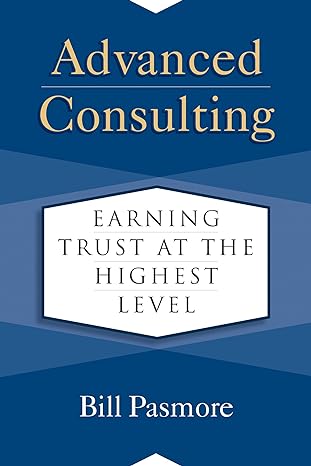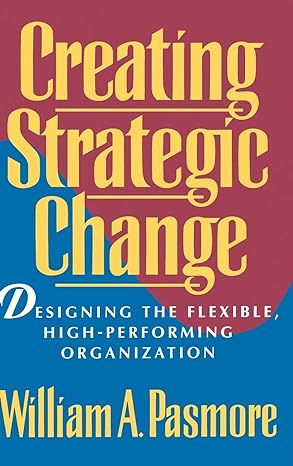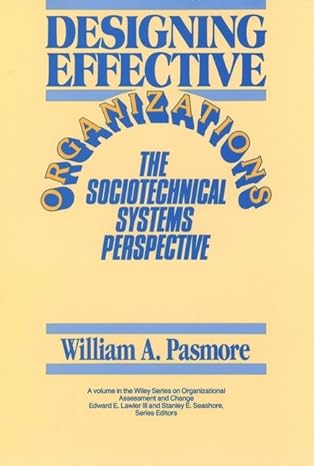Recognition for Bill Pasmore:
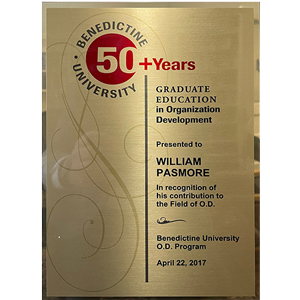
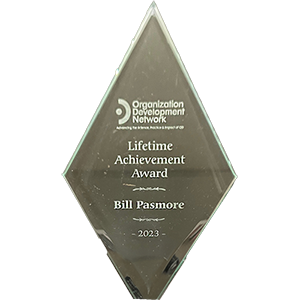

Help At The Top
I specialize in working at the top, with CEOs, boards and executives. I help these groups perform at their best by observing them in action, providing helpful feedback and facilitating critical deliberations. No matter how experienced we are, we can all improve. That improvement can make a huge difference, especially given the impact that those at the highest levels can have on their organizations and the world.
I love working with people who have a passion for learning but I also understand that in some cases, we need to put out the fire before learning can become a priority. In the end, my goal is to leave companies and the people who lead them more successful and more capable than I found them.
My Story
My family ran a resort in the north woods of Wisconsin, which got me interested in business. I was also interested in flying, so I went to Purdue where I could major in both aeronautical engineering and management. I came away from Purdue with more than I expected; a Ph.D. in Administrative Sciences and a thirst to understand individual and organization development.
I became a professor and took a position at Case Western Reserve University because its doctoral program was famous for its attention to both personal growth and organizational effectiveness. I stayed for twenty years, wrote a lot of books and consulted to organizations. I then joined Delta Consulting in New York, a firm that focused exclusively on working with CEOs and Boards. That’s when I came to fully understand how different life is at the top of organizations and how much room there was for improvement.
Following ten wonderful years at Delta, I joined the Center for Creative Leadership where I could focus on helping to coach and develop those at the top and hold the position of Senior Vice President. The Center provides a platform to do some amazing programs with top executives and boards around the world.
Shortly after joining the Center, I was invited to join the faculty at Columbia, teaching in their masters, executive masters and doctoral programs in social-organizational psychology with a focus on research and helping students learn to lead change. There, I have continued my writing and giving back while renewing my independent consulting.
I’m based in New York, where I have now lived longer than anywhere else in my life.
My Work
Here are just a few examples of the work I have done.

Development at the Top
A global heavy industry company wanted their next-generation of C-Suite executives to be better prepared for working at the highest level of the organization. They recognized that historically, individuals were promoted to the C-Suite with a narrow functional view of the organization and an orientation toward their individual success. In my role with the Center for Creative Leadership, I co-designed a year-long, intensive learning journey for a group of the company’s highest potentials to get ready to take the company into the future, as members of a more highly effective leadership team.

Board-CEO Relations
A large, global family-owned agricultural company was dealing with the after-effects of a generational transition in leadership which created tensions between the board and new family-member CEO regarding the direction of the company. Work with the board and CEO independently and together through real-time joint work on the company’s strategic challenges brought the parties closer together while creating clearer direction and new opportunities for growth.

CEO Coaching, Organizational Transformation
A long-term coaching relationship with the CEO of a global pharmaceuticals company led to the coaching of several additional executives over time as well as establishing the company’s core purpose and values while repositioning it for growth.

Curating Conversations
Sometimes, the right conversation can provide both clarity and the spark to action that opens the door to new possibilities. Using my network of high-level connections, I find just the right resource for the issue at hand. Arranging and facilitating these conversations is something that I have always enjoyed.
Creating an Aligned Executive Team
Getting snowed-in at a senior-team retreat on Martha’s Vineyard turned out to be the perfect opportunity for this team to work through its longstanding issues. With no place to go, the team could concentrate on reaching agreement about how it would work going forward. The transition from a group of individuals to a truly collaborative team involved some painful discussions that had been avoided for far too long.

Re-designing the Enterprise
As the consultant to the new CEO of a medium performer in its industry, it became clear that something was badly broken in how the company operated and that a major change was necessary. Redesigning the enterprise from top to bottom and replacing several key executives took several months but led quickly to dramatic improvements in performance and a more highly engaged workforce.

CEO Succession
As mentioned, I have helped Wal Mart, Pepsi, Dow, Mass Mutual and other companies identify and select their next CEOs. Understanding that the CEO’s job requires a crucial combination of complex business and personal competencies. Understanding from my experience of working with CEOs over many years helps me to know what “great versus good” looks like.
Previous Clients
















Resources
Articles

Journal Article: The Change Leader Behavior Inventory
As change accelerates, failed attempts remain high. Leaders lack formal change training and feedback tools. This study aims to fill this gap with the Change Leader Behavior Inventory, measuring change leadership behaviors.

The Organization Dimension of Global Change
We aim to explore the organizational dimension of global change with urgency and clarity. Global social change organizations are reshaping cooperation worldwide, offering insights vital for a sustainable future. This series in Human Relations aims to highlight their significance in organizational science and societal transformation.

A bridge too far? How boundary spanning networks drive organizational change and effectiveness
Can activating networks and boundary-spanning leadership solve change challenges? Organizations fail twice as often as they succeed in change efforts, a sobering reality for leaders amid competitive threats, innovation, and global shifts, pushing for new strategies with uncertain success rates.
Books
Downloads

Re-set your Organization for the Post Covid Future with Creative Leadership
In this article, we offer guidance based on research to help leaders understand some of the most important things they should be doing in the next few weeks and months.

Intervening Online: When you can’t do OD face to face
Whether you are planning an in-person or online intervention, the place to begin is with understanding if you have chosen the right intervention for this moment in time.

Developing a Leadership Strategy A Critical Ingredient for Organizational Success
Some of the best and most venerable organizations are failing to adapt to change, implement their strategic plans successfully or prepare for a more uncertain future.

